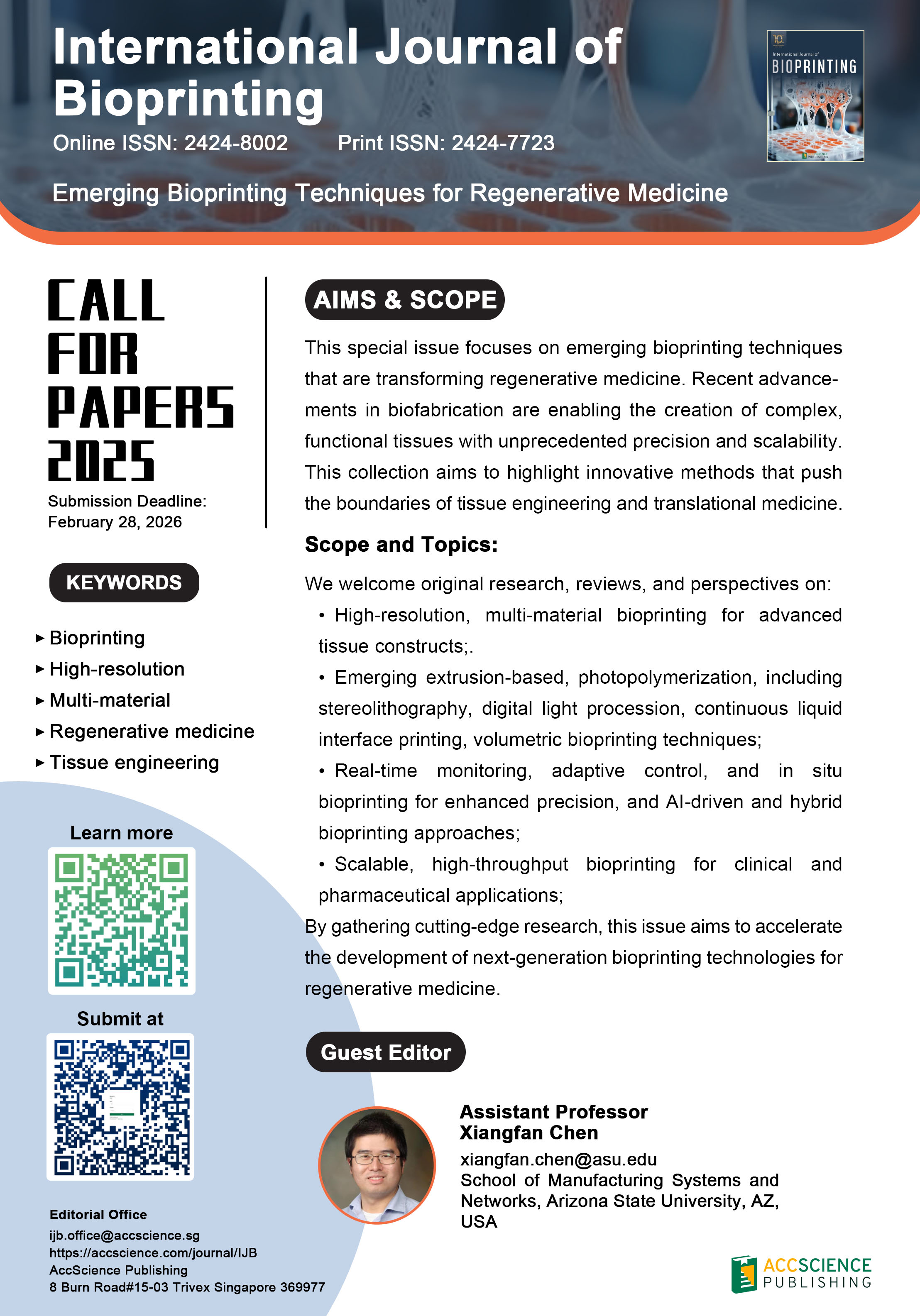
This special issue focuses on emerging bioprinting techniques that are transforming regenerative medicine. Recent advancements in biofabrication are enabling the creation of complex, functional tissues with unprecedented precision and scalability. This collection aims to highlight innovative methods that push the boundaries of tissue engineering and translational medicine. We welcome original research, reviews, and perspectives on:
- High-resolution, multi-material bioprinting for advanced tissue constructs;
- Emerging extrusion-based, photopolymerization, including stereolithography, digital light procession, continuous liquid interface printing, volumetric bioprinting techniques;
- Real-time monitoring, adaptive control, and in situ bioprinting for enhanced precision, and AI-driven and hybrid bioprinting approaches;
- Scalable, high-throughput bioprinting for clinical and pharmaceutical applications;
By gathering cutting-edge research, this issue aims to accelerate the development of next-generation bioprinting technologies for regenerative medicine.
Development of a 3D-printed polycaprolactone/magnesium phosphate composite scaffold functionalized with novel antimicrobial peptides for enhanced bone defect regeneration


